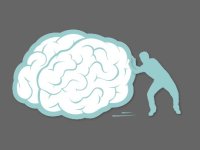Shifting Mental Models in Educators
Your content has been saved!
Go to My Saved Content.Early in my career as an instructional coach, I worked with an enthusiastic new high school teacher who inspired most of her students to demonstrate their learning in all kinds of creative ways. Her ninth-grade English class performed skits, recorded radio plays, and published magazines that were of exceptional quality and showed mastery of learning. However, a handful of students were never in prominent roles, produced mediocre work, and weren't mastering the content.
In my observations, I had noticed a trend in the teacher's interactions with them -- she didn't push them as she did the others, she let them off the hook easily, and she gave them simple tasks. All of these young men were African American, and this group comprised almost the entire group of African American males in her classes. I gently and carefully probed into the teacher's decision making, asking nonjudgmental questions about her assumptions about these boys, and then one day, she said this: "I think they're just lazy. I don't think they'll follow through. So I give them tasks they can manage."
I felt a mix of fear (would I know how to coach her through this?) and relief (she'd named it, not me) as I recognized the mental model that this teacher held about her African American boys -- a mental model that did not serve them as learners.
What Is a Mental Model?
Mental models are our values, beliefs, and a series of assumptions about how the world works. Unconsciously, we create a story about other people, institutions, and the world which drives our behavior. While everyone has them (in fact, we need them to make sense of the complex world in which we live), all mental models are flawed to some extent and usually invisible to us.
Instructional coaches often work with teachers around their practices in the classroom -- their lesson planning, assessment strategies, management approaches, and so on. This is the area in which I've worked for many years, and what I've seen is that when instructional coaches focus only on these behaviors, the outcomes are limited both in terms of the impact on children and the change in the teacher's practice.
But when an instructional coach also addresses and explores a teacher's mental models about a range of topics including students with learning disabilities, children in poverty, immigrants, English learners, and so on, then there's a greater likelihood of transformational change and equity for students.
A skilled transformational coach attempts to bring mental models to the surface, explore them, and see the impact of the mental model on the teacher's life as well as on students. Furthermore, a skilled coach facilitates the creation of new mental models that serve all of us, teachers and students, better.
Strategies for Shifting Mental Models
When we recognize a mental model surfacing, either in ourselves or in another, that doesn't seem to be of service (meaning, it could be having a detrimental impact on us or others), here are some approaches for shifting it:
First, greet the mental model with curiosity. Some mental models can feel scary when they've crystalized (such as "the African American boys are lazy") and can raise all kinds of feelings. But if we put a great deal of energy into the emotions and managing them, we'll get distracted from the learning opportunity. Acknowledge the feelings and get curious about the mental model.
Then ask: Where might this mental model have come from? What might be all the elements that contributed to its creation? And with genuine open curiosity, investigate those.
Third, ask: What's the impact of holding this mental model? What can and can't I do if I hold it? What's possible for others if I'm attached to it? How has it served me to hold it, and what might be possible if it shifted?
Fourth: Look for any and all evidence that the model might not be "true." Are there any exceptions to this rule? Create instability for the mental model, make it feel weak and send fractures through its construction. If the mindset is in someone else, remember that you can't make anyone change their beliefs, but you can make those beliefs unstable.
Fifth: Commit to trying something new to test the mental model. When I got to this point with the new English teacher I coached, I nudged her into giving the boys that she thought were lazy big roles in an upcoming production. We created a plan for the students so that they'd be successful -- which they were.
Sixth: Name the shift in mental model using the words belief, mindset, and mental model. This was what I said to the teacher in June, "Earlier this year, you expressed a belief that your African American boys were lazy. How would you say that mental model has changed based on what you did and saw this spring?" Acknowledge the learning and the new possibilities for the teacher and the students.
A Path Toward Equity
If we're intent on transforming classrooms and schools, if we are truly committed to seeing equitable outcomes for children, we'll need to take a long and hard look at our mental models. This is hard and scary work, because we need to poke around in the beliefs that we hold about education and children and their ability to learn.
There are strategies that we can learn so that these conversations can be easier and productive and so that they result in positive changes in the classroom.
How do you identify and challenge your mental models?
